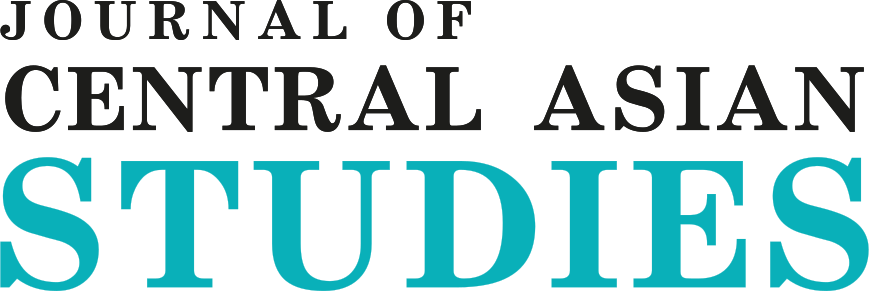Central Asia in India's Foreign Policy Strategy
DOI:
https://doi.org/10.52536/2788-5909.2023-2.03Keywords:
India, Central Asia, foreign policy strategy, trade and economic cooperation, securityAbstract
In the early 1990s, India's foreign policy strategy faced the challenge of reevaluating the country's position and role in the emerging new international order. This prompted India to change its approach to foreign policy. The dominance of the United States in global politics actually led to a temporary autonomy of India's foreign policy within the framework of the emerging opportunity for New Delhi to possess nuclear weapons (intensive interactions with the United States, Israel, and countries of the Association of South-East Asian Nations). However, starting from the 2000s, India began to perceive itself as a country capable of exerting a balancing influence in the world (nuclear deal between India and the United States, solidarity with China on climate change and trade issues, and broadening of ties with Russia and other major regional countries). This trend in Indian foreign policy continues to this day. India has become more sensitive to its capabilities and understands the expectations that the world has for it. Thanks to the expanded neighborhood policy (the concepts of "Act East", "Think West", "Northern Policy", "Connect Central Asia"), India has managed to form an almost new foreign policy course aimed at promoting partnership for the development far beyond South Asia, including the Central Asian countries.
References
Belokrenitsky V. (1994). Russia and Greater Central Asia. Asian Survey. Vol. 34, № 12. pp. 1093-1108.
India’s Connect Central Asia’ Policy (2012). Keynote address by MOS Shri E. Ahamed at First India-Central Asia Dialogue [Electronic resource]. URL: https://www.mea.gov.in/Speeches-Statements.htm?dtl/19791/.
Sahoo N. (2014). Decoding Modi’s Foreign Policy. [Electronic resource]. URL: https://carnegieendowment.org/2014/09/23/decoding-modi-s-foreign-policy-pub-56711.
Shedrov I. (2022). India in Central Asia: on the way from symbolic to real practices [Electronic resource] URL: https://russiancouncil.ru/analytics-and-comments/analytics/indiya-v-tsentralnoy-azii-na-puti-ot-simvolicheskikh-k-realnym-praktikam/.
Yakubov I. (2020). India and Central Asia: The Thorny Path of Cooperation [Electronic resource] URL: https://cabar.asia/en/india-and-central-asia-the-thorny-path-ofcooperation.
India hosts first meeting on Chabahar Port development with Central Asia (2023). [Electronic resource] URL: https://www.newscentralasia.net/2023/04/13/india-hostsfirst-meeting-on-chabahar-port-development-with-central-asia/.
Shaikh Z. (2018). SCO summit ends: India stays firm, refuses to back China’s Belt and Road Initiative. [Electronic resource] URL: https://indianexpress.com/article/india/sco-summit-ends-india-stays-firm-refuses-to-back-chinas-belt-and-road-initiativenarendra-
modi-xi-jinping-5212248/.
Zafar A. CICA Gaining Dynamism in Shifting Focus on Asia. Indian Council of World Affairs. https://www.icwa.in/show_content.php?lang=1&level=3&ls_id=4785&lid=2387. 30 August 2019.
Risbekkizi P. (2022). Former Indian Ambassador to Kazakhstan Ashok Sajjanhar: Good prospects exist for enhancing cooperation in trade and economy between India and the EAEU. Ankara Center for Crisis and Policy Studies [Electronic resource], URL: https://www.ankasam.org/former-indian-ambassador-to-kazakhstan-ashok-sajjanhar-goodprospects-exist-for-enhancing-cooperation-in-trade-and-economy-between-india-andthe-eaeu/?lang=en.
Choudhary L.R. (2022). India’s Defence Diplomacy Towards Central Asia. Indian Journal of Asian Affairs. Vol. 35, № 1. pp. 73-93.
Downloads
Published
Issue
Section
License
Copyright (c) 2023 Assanbayev M.

This work is licensed under a Creative Commons Attribution 4.0 International License.










 Open content is licensed under the CC-BY
Open content is licensed under the CC-BY 